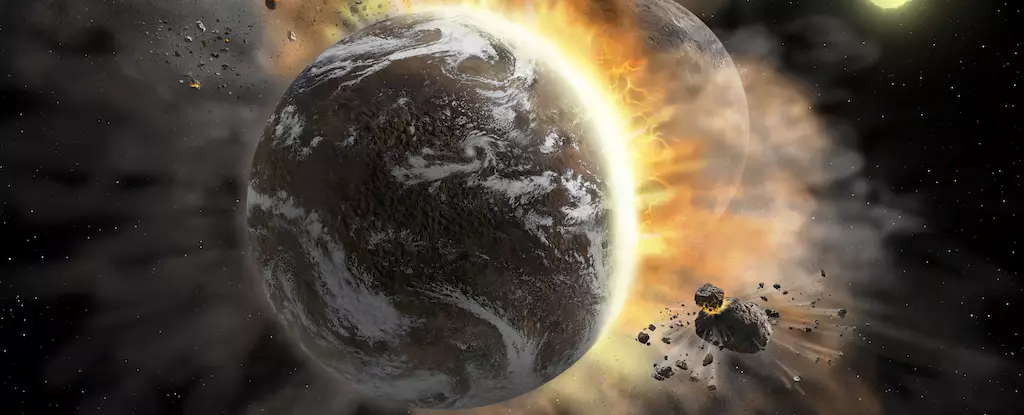The Moon serves as a visual testament to the tumultuous beginnings of our Solar System, showcasing a surface pockmarked with craters from ancient collisions. The notion that our cosmic origins were steeped in chaos invites us to ponder the current state of exoplanetary systems. Recent research suggests that the violent interactions prevalent in the early days of the Solar System might be a universal trait of budding solar systems. By simulating collisions between massive planets, scientists aim to unearth insights into how these celestial bodies achieved their impressive sizes and compositions.
Exoplanetary Collisions: A Titan’s Birthright
At the heart of this investigation lies the question of how the cores of massive exoplanets may harbor up to 100 Earth masses of solid materials. The prevailing theory posits that the growth of these giants can be attributed to the gravitational collisions and mergers with smaller exoplanets, each containing substantial masses of their own. A recent study led by theoretical physicist J.J. Zanazzi examines the seismic ramifications of collisions between gas giants of differing sizes and ages. By exploring how such events might generate seismic waves, the astronomers hope to shed light on the internal structures of these distant worlds.
Seismic Waves as Cosmic Signatures
The study titled “Seismic Oscillations Excited by Giant Impacts in Directly-Imaged Giant Planets” delves into whether the seismic waves generated by colossal impacts are perceptible to astronomic instruments like the James Webb Space Telescope (JWST). Although the JWST cannot directly detect seismic waves, it can measure subtle variations in light with remarkable precision. Consequently, researchers ponder whether seismic activity induced by planetary collisions could lead to detectable fluctuations in brightness, enabling a unique technique to probe planetary interiors.
One compelling subject of this analysis is Beta Pictoris b, a super-Jupiter with an estimated age of 12 to 20 million years. This substantial exoplanet, significantly enriched with metals, reveals that ongoing cosmic processes—such as the accumulation of heavy elements through planetesimal impacts—are active in its formative stages. Researchers theorize that massive collisions could impart enough momentum to stimulate seismic waves across the planet, offering a novel approach to understanding the environmental conditions in which such planets evolve.
Exploring Seismology in Exoplanets
Zanazzi’s team meticulously calculated the potential effects of a Neptune-mass planet striking Beta Pictoris b, revealing that the resulting seismic activity would likely continue for extensive periods, mirroring the planet’s youth. The implications of such findings ripple across astronomical research, providing an innovative avenue for interpreting light variations from exoplanets and linking them to underlying seismic processes. This intersection between seismology and photometry could potentially enrich our understanding of planetary formation and evolution.
Seismic oscillations provide a unique lens through which scientists can observe cosmic giants, enabling them to infer aspects like bulk density and internal stratification. Traditional methods of studying giant planets—primarily based on gravity measurements—often fall short when it comes to distant exoplanets. By employing seismic data as a complementary approach, astronomers could attain more granular insights into the internal mechanics of these far-off worlds.
Pioneering Future Discoveries
The study not only broadens our comprehension of planetary interiors but also hints at potential applications beyond seismic wave research. The insights uncovered may enrich our understanding of planetary migration processes, such as how tidally-induced gravitational forces can lead to oscillatory behavior in other massive planets. This newfound technique affords an exciting opportunity to unearth the history and dynamics of exoplanets residing beyond our Solar System.
As we extend our gaze towards exoplanets, the exploration of their internal dynamics through seismic oscillations presents an exhilarating frontier in astronomy. The ability to probe these distant worlds in unprecedented ways not only hones our knowledge of planetary formation but could also provide the keys to understanding the evolution of entire solar systems. As we continue to harness the power of high-precision tools like the JWST, the universe promises to reveal more of its enigmatic dance, one seismic wave at a time.

